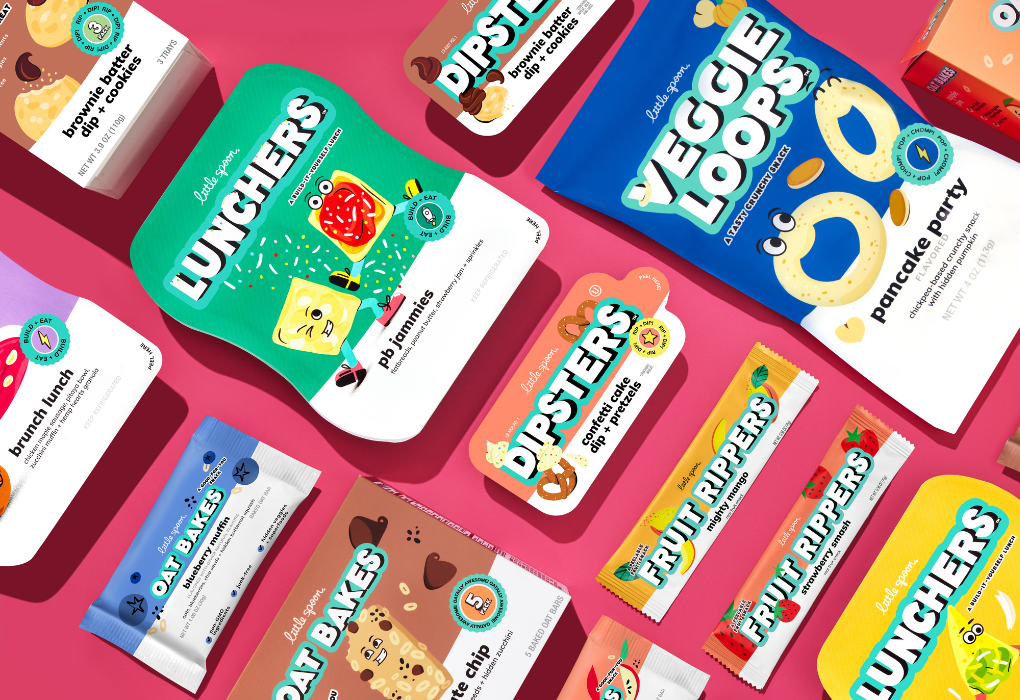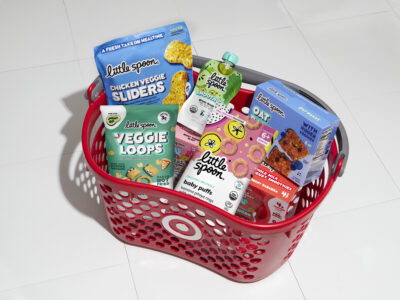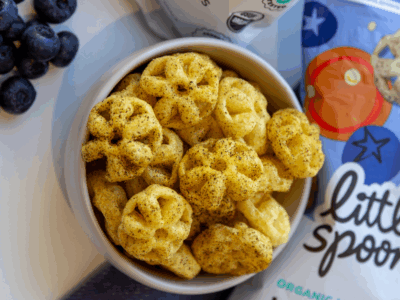Snacks! We find half eaten ones in coat pockets, flattened ones under car seats, and don’t even look in the lint trap. The only thing scarier than snack scraps being everywhere? Forgetting the snack bag. Raise your hand if you’ve been guilty of walking out the door only to realize halfway to your destination you’ve forgotten the snacks. What should be something to help you through the day becomes an even greater stressor! Kids are constantly asking for snacks, they don’t want what you packed for them, they want options and they want what their friends are eating (even if it’s the same thing!).
As parents, snacks are always on our mind for a variety of reasons, with keeping the little ones fueled and staving off general hangry being top of the list. But with so many choices out there, it can be tough to know what makes a healthy snack that will satiate and nourish your kids. And, it has to be delicious and convenient, especially when you are on the go. Not an easy task.
So the real question is, how do you navigate the “In-Betweens” (as I like to call snacks) that will make your life easier and your kids happier? Let’s break it down below:
1. Craft your snacking strategy.
Before we jump into the what, where, when and why, let’s shoot up to 30,000 feet and talk strategy. Nutrition is of course important, it’s what I do for a living so I have a pretty strong opinion about it, however it’s not just how healthy the food is, but about creating healthy eating behaviors for our kids. You won’t be in charge of their eating forever and you should see your role as helping to give them an understanding about what makes them feel good, gives them energy, and most importantly how to stop when they’re satiated. To do this you’ll need to ask yourself a few questions:
*Is your child a grazer? Constantly reaching for the snack drawer, yet avoiding the main meals?
*When’s the ‘witching hour’? Do they typically snack a lot between 1-4pm or from 6-8pm post dinner?
*Crunchy or creamy? Salty or sweet? Do they love to dip and experiment with their food? What does the ideal snack taste like?.
2. Decide on a meal/snack schedule — establish a routine.
With all things in life, timing is everything and once you have a better understanding of kids’ snacking personality, do yourself and your kid a favor and set a schedule. Most kids eat roughly three snacks a day: breakfast, snack, lunch, snack, dinner, snack but every family has their own dynamic around timing around snack time. If your child is a grazer, this is especially important. The goal is for your child to sit down to their meals hungry. Aim to keep snacks to at least an hour before their next meal. Children thrive on routine and when they know what to expect it makes for a smoother day all around. They may whine and fight you at first but ultimately everyone will settle into a routine and you will find much less tension around snack time decisions. You could make a chart, have them draw pictures or write it out- anything to make a visual representation of what the day looks like.
3. Practice mindful eating.
Don’t worry, I’m not suggesting any snacking mantras, but now that you have a structure in place, time to make the physical act of snacking a bit more intentional. So what does that look like? Basically, you don’t want kids mindlessly eating, make them stop what they’re doing, sit down if possible, and eat their snack. This will help them slow down their eating allowing their tummies to get full and prevent overeating, and the belly aches that come with it. This is especially true for those kids who love to snack after dinner time as this type of snacking can be out of habit, because they are actually tired (not hungry) or want to delay bedtime. Pick a snack (like Little Spoon’s Oat Bakes or Veggie Loops), have them plate their food and enjoy it at the dinner table. Obviously, you can’t do this all the time, but do your best and eventually your kids will do it on their own.
4. Be a role model.
Kids are master imitators, they are sponges and notice everything. So here’s your chance to instill good snacking behavior without having to say a word. Take the time to plate your snack (no eating out of the box!), sit down, put the phone away, and enjoy! This won’t only be good for your kid, but for you too!
5. Try to minimize the stress around snacks.
We’ve all been there, the little one is on the precipice of a meltdown, you know they’re hungry but you missed the window for an easy acceptance of your healthy offering. Stress level high! Take a breath, and remember, it’s going to be okay, you’ll get through this, there will be a tomorrow, there may be some tears but in the grand scheme of things it’s no big deal. If you really want to avoid the fuss, try any of Little Spoon’s junk-free snacks and I have a feeling it will be a breeze. Does your child tend to want something on the sweeter side or is more interested in some salty, crunch snacks? Also, try diversifying your snacks. Kids love to play with their food so anything they can dip, crunch, or peel is often easier to accept. Keeping your calm, not turning snack time into stress time will pay serious dividends.
6. Get kids involved in the process.
Whether it’s taking them shopping with you where they have the power to choose some snacks or packing up their snacks for the day- let them be part of the process. This will make them more excited about snack time, build those good behaviors and when they have to do it for themselves, make the whole process less daunting.
7. Building a better snack.
Okay now let’s get to the meat of it, how to build a snack that satiates, fuels, and brings a smile to those little faces. Ideal snacks include protein (dairy like yogurt or cheese, nuts/nut butter, eggs, animal or bean based) and fiber (fruit, veggies, beans, seeds) and something for fun whether it’s something sweet or salty. Check out the list below to make your selection a breeze:
1. Energy bites such as these no-bake bites or these peanut butter cups. I recommend subbing out peanut butter for almond butter or sun butter to be allergy-friendly at a playground or playdate.
2. Smoothies consisting of a protein like yogurt or nut/seed butter plus a fruit and/or vegetable.
3. Cheese and fruit – this can also be a cheese and crackers or a turkey/cheese/cucumber stack with a side of a Little Spoon Fruit Ripper.
4. Roast chickpeas or chickpea based chips/crackers.
5. Nut/seed butter + apple or banana or with crackers.
6. Aunts on a log – 5 celery pieces topped with hummus and chopped olives OR 5 celery pieces topped with nut butter and raisins or chocolate chips.
7. Yogurt or cottage cheese (full fat) and fruit or granola.
8. Overnight oats or chia pudding.
9. Healthy muffins like superhero muffins, carrot cake muffin tops, or carrot banana muffins.
10. DIY trail mix.
Like all things in parenting, don’t be so hard on yourself. Do the best you can. Some days may feel like a triumph and other days not so much. Try to look at things over the week vs. over the course of a day- you will find there is more “balance” that way. And more often than not, you are doing a much better job than you give yourself credit for.



